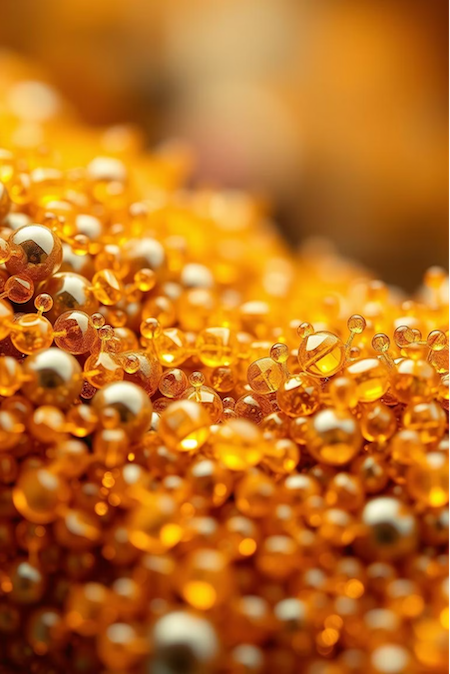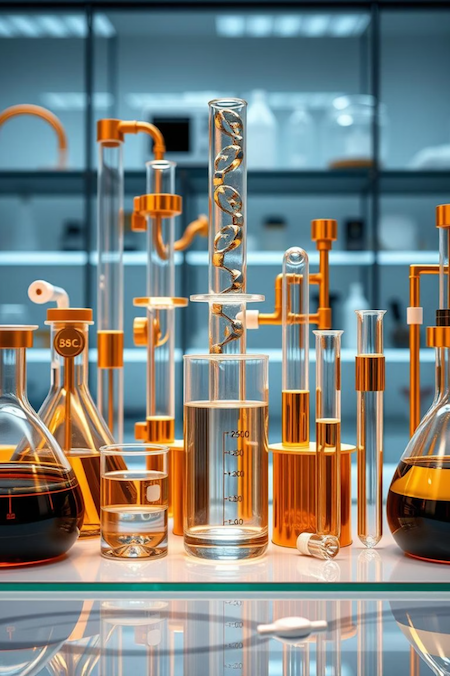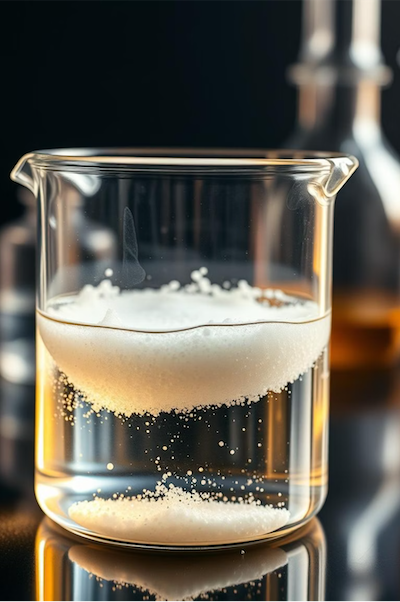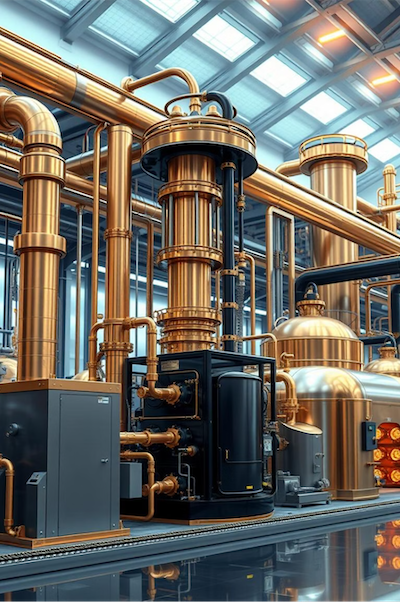Scientific Development

Extraction of non-ferrous and rare metals from wash sulfuric acid
The development of a scientifically based technology for the selective extraction of these metals is a relevant task that meets modern environmental safety and techno-economic efficiency requirements.
Relevance of the Problem
Modern high-temperature technologies for processing copper and copper-nickel raw materials lead to an increased transition of valuable metals (Cu, Zn, Fe, Mo, Re, Se) into the gas phase. This changes their distribution between copper electrolysis sludges and sulfuric acid production products.
Rhenium and selenium, which do not have their own deposits, are associated with other minerals. The main sources of their extraction are molybdenum and copper concentrates, as well as waste from copper shale processing and wash sulfuric acid. The low content of these elements in raw materials makes their extraction a complex and accompanying process.
Transition into the gas phase
Increased transition of Cu, Zn, Fe, Mo, Re, Se into the gas phase.
No own deposits
Rhenium and selenium have no independent minerals or deposits.
By-product extraction
Rhenium and selenium are extracted as by-products along with major elements.
Sorption Technology
In the hydrometallurgical industry, sorption technology is widely used to improve the quality of raw materials and deeply purify solutions. Ion exchange methods, combined with electrochemical and membrane techniques, ensure compliance with environmental standards and extraction of valuable components from low concentrations.
This technology is characterized by high selectivity for the target metal, short cycle duration, and low reagent costs. It enables the processing of poor raw materials, from which metal extraction was previously unprofitable.
High Selectivity
Sorption is selective to the target metal.
Short Cycle
The process is characterized by a short technological cycle duration.
Cost Effectiveness
Relatively low costs and consumption of chemical reagents.


Research Objective
The objective of scientific research and pilot industrial testing is the comprehensive processing of the washing sulfuric acid solution from SKTs MPZ. This includes the extraction of valuable components (Cu, Zn, Fe, Mo, Re, Se) and the production of high-quality fertilizer with water being returned to the cycle.
The research focuses on finding optimal conditions for metal extraction using combined precipitation and sorption methods. This will allow both joint and selective extraction of metals from complex solutions.
Comprehensive Processing
Extraction of valuable components from washing sulfuric acid.
High-Quality Fertilizer
Production of fertilizer from residual solutions.
Water Recycling
Return of purified water to the process cycle.
Experimental Methodology
For pilot-scale testing of copper, zinc, molybdenum, and rhenium sorption from washing solution, cubic tanks and sorption columns were used. For the extraction of Mo, Re, and Se, various weakly basic ion-exchange resins of our own modernized production were applied.
Numerous experiments were conducted on the sorption-desorption of Mo, Re, and Se from washing sulfuric acid. The tested solution was passed through sorption columns at a rate of one volume per hour. After sorption, the sorbent was washed and molybdenum was desorbed with an aqueous ammonia solution.
Solution Preparation
Feeding the washing solution into sorption columns.
Sorption
Passing the solution through the ion-exchange resin layer.
Washing
Washing the sorbent with tap and demineralized water.
Desorption
Extracting metals from the resin with ammonia solution.
Analysis
Laboratory analysis of obtained eluates.
Results of Rare Metal Extraction
Table 1 presents the elemental analysis results of the initial washing solution from SCU, showing the content of various metals. Table 2 contains experimental data on the extraction of rare metals (Se, Re, Mo) using various ion-exchange resins.
The average annual yield of rare metals from washing sulfuric acid (60 m³/h) at SCU MPZ is: Se – 1.07 t, Re – 2.1 t, Mo – 2.1 t. As the volume of processed solution increases, the content of sorbed metals on the resin changes, indicating a shift in resin selectivity.
| Cu | 161.0 |
| Zn | 988.0 |
| Se | 7.0 |
| Re | 8.3 |
| Mo | 8.2 |
| Fe | 24.0 |
Non-Ferrous Metals Extraction
After the sorption of Mo, Re, and Se, experiments were carried out to extract Cu, Zn, and Fe from the mother liquor. Copper was sorbed, desorbed, and precipitated as hydroxide, then dried to copper oxide (CuO). Iron was precipitated before copper sorption, and zinc after.
Based on the results, the quantities of extracted metals per day, month, and year were calculated. The average annual extraction from sulfuric acid (60 m³/h) at SCU MPZ is: Cu – 321 t, Zn – 528 t, Fe – 385 t.
0
Tons of Copper
Extracted per year.
0
Tons of Zinc
Extracted per year.
0
Tons of Iron
Extracted per year.


Conclusions and Prospects
The possibility of extracting non-ferrous and rare metals from the washing sulfuric acid of SCU MPZ has been experimentally confirmed. Modernized weak-base resins of our own production have been researched and tested, showing their effectiveness. The possibility of selective extraction and separation of metals in pure form has been established.
Preliminary annual quantities of extracted non-ferrous and rare metals were determined. Additionally, the potential to obtain ammonium sulfate – a highly effective fertilizer – from mother liquors after metal sorption was demonstrated.
Extraction Confirmation
Possibility of extracting non-ferrous and rare metals.
Resin Efficiency
Use of weak-base ion-exchange resins.
Selective Separation
Selective extraction and separation of metals.
Fertilizer Production
Production of ammonium sulfate from mother liquors.